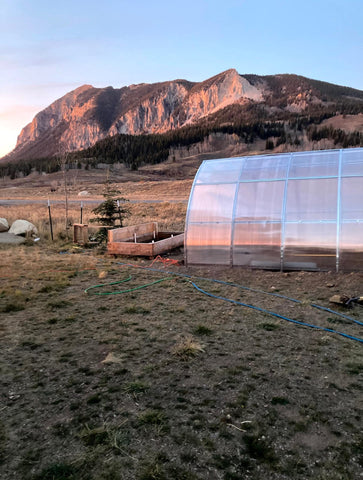Image from USDA
Characteristics of Utah Planting Region
Utah has a combination of a semi-arid and desert climate and is considered one of the driest states in the country. Most of the state experiences four distinct seasons throughout the year, with long scorching summers and short, freezing winters. Utah is regularly subjected to extreme and unpredictable weather such as:
- Severe wildfires
- Frequent thunderstorms
- Avalanches
- Earthquakes
- Lightning storms
- Heavy snowfall
- Temperature fluctuation
- Drought
- High winds
- Landslides
Utah has a mid-length planting season, although this varies across the state. On average, the frost-free period begins mid-May and finishes towards the end of October.

Challenges of Growing in Utah
Despite the slightly extended growing season for the region, there are many challenges to gardening in Utah.
1. Unpredictable Weather
The weather across the state is unpredictable and can be severe. Wildfires, thunderstorms, landslides, winds, and more make the region a complete wildcard when it comes to monitoring weather. This, in turn, makes it difficult to track changes and know when to protect your garden.
2. Extreme Temperature Fluctuations
Between the high altitude climate and the desert and mountainous regions, the temperature fluctuates quite dramatically across the state. While daytime temperatures can be warm, nighttime temperatures can plummet and damage all of your hard work.
3. Dry Climate
Utah is no stranger to droughts. The climate across the entire state is very dry, with minimal precipitation throughout the year. Lack of moisture can be detrimental to most plants’ growth, making this a difficult challenge to overcome with outdoor growing.

Little Cottonwood Canyon, Utah
The Benefits of Using a Greenhouse in Utah
There are several advantages to using a greenhouse in the rugged state of Utah. Not only will it offer protection from the unpredictable weather across the region, but it will also allow you to regulate indoor temperatures and help combat drastic fluctuations. Additionally, a greenhouse can help you mimic a higher humidity level and keep your plants hydrated and healthy throughout the day.
1. Extend your Growing Season
-
Without a Greenhouse:
Utah typically experiences a brief 3-4 month planting season. This short timeframe limits the ability to grow many vegetables without indoor assistance, making gardening a challenging task if opting for plants that aren’t cold-hardy.
-
With a Greenhouse:
Gardeners across the state of Utah can benefit from an extended growing season by using a greenhouse. The shorter planting season in the region can increase to 7-9 months, allowing you to grow vegetables beyond the frost-free period.
Learn more about specific growing dates for your area and the best vegetables to plant in each part of Utah.


Customer images of the Sungrow Greenhouse in a similar climate
2. Grow a Wider Variety of Vegetables
-
Without a Greenhouse:
Vegetables that can withstand drastic temperature fluctuations and temperamental weather are the best choice for outdoor gardening. Unfortunately, options are very limited across the state. Some vegetables that will do well include:
- Onions
- Rhubarb
- Broccoli
- Peas
- Spinach
- Cabbage
- Radishes
-
Turnips
-
With a Greenhouse:
Expand your planting options by using a greenhouse in Utah. This form of growing will allow you to choose from a pool of countless vegetables that may have struggled to survive in an outdoor setting. The following are popular crops for greenhouse gardeners in this region:
- Artichokes
- Asparagus
- Pumpkins
- Winter Squash
- Cantaloupe
- Eggplant
- Tomatoes
- Peppers
- Lima Beans
- Basil
- Cucumbers
- Summer Squash
- Sweet Corn
- Carrots
- Horse Radish
- Okra
- Zucchini
- Green Beans
- Garlic
- Watercress
- Leeks
- Celery
- Spanish Onion
- Jalapeño

Artichoke Plant
Why Planta Greenhouses?
- Wind resistant up to 65 mph (learn more about how our greenhouses hold up in high-altitude climates).
- Withstands a snow load of up to 98 psf (480kg/square meter).
- Made with a heavy-duty galvanized steel frame.
- Polycarbonate panels provide 100% protection against UV rays.
- The Sungrow greenhouse is bell-shaped - allows the wind, snow, and hail to slide off the sides.
- Extendable (Sungrow, Sigma and Farmer models can be extended beyond 100ft)
- Made in Europe and are exclusively imported
- Maintenance-free

